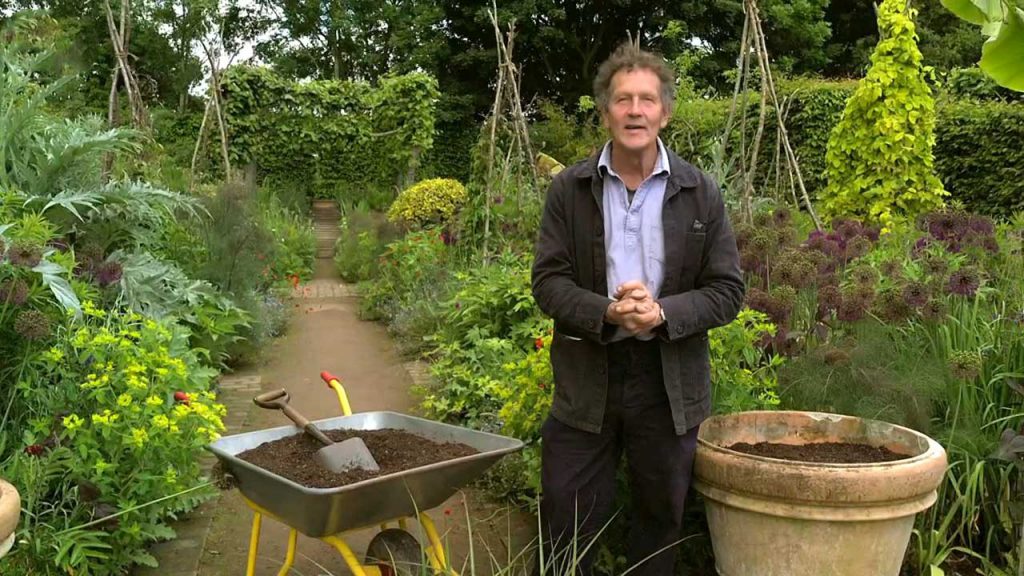Gardeners’ World 2022 episode 13: Monty Don focuses on enhancing the beauty of the containers in the jewel garden. He carefully plants courgettes and clematis, ensuring they thrive in their new homes, and takes time to check on his beehives, sharing insights on maintaining healthy colonies. Meanwhile, Arit Anderson embarks on an inspiring journey in west London, where she meets a dedicated woman committed to transforming unloved and neglected outdoor spaces into vibrant green oases. This segment highlights the importance of urban greening and the positive impact it has on communities.
Nick Bailey continues his exploration of the fascinating world of irises, turning his attention to the exquisite Siberian and water irises. He delves into their unique characteristics and growing conditions, offering viewers valuable tips on how to cultivate these stunning plants in their own gardens. The episode also takes us to Somerset, where we meet a passionate gardener who has painstakingly created the cottage garden of her dreams. Her story is a testament to the dedication and creativity involved in bringing a personal vision to life, showcasing a breathtaking array of flowers and plants that embody the quintessential charm of a cottage garden.
Additionally, Gardeners’ World viewers from across the country share their own gardening triumphs and the joy their green spaces bring them. These personal stories not only celebrate the beauty and diversity of gardens but also emphasize the therapeutic and uplifting effects of gardening on well-being.
This episode of Gardeners’ World is filled with practical advice, inspiring stories, and stunning visuals, making it a must-watch for gardening enthusiasts looking to enhance their knowledge and draw inspiration from fellow gardeners. Whether you’re interested in container gardening, urban greening, or simply enjoying the splendor of a well-tended garden, this episode offers something for everyone.
Gardeners’ World 2022 episode 13
How to grow courgettes
Courgette plants are easy to grow and fruit abundantly – expect to pick three or four a week in good weather. These plants like to spread out, so give them about a square metre/yard each, or grow in large containers or growing bags if you’re short of space.
Courgettes are easy to grow from seed. They are best started off indoors in pots, but you can also sow them outdoors in the spot where they are to grow. For earlier crops or in cold regions, sow seeds indoors from mid- to late April at 18–21°C (65–70°F). Sow seeds individually on their side, 1.5cm (½in) deep, in 7.5cm (3in) pots of compost.
In late May or early June, prepare your sowing site by digging in lots of home-made compost or well-rotted manure, to about the depth and width of a spade’s blade. Then sow two or three seeds in the centre, 2.5cm (1in) deep. Cover with a cloche, jar or plastic, and leave the covering in place for two weeks, or as long as possible, after germination. If more than one seed germinates, remove the smaller, weaker seedlings to leave just the strongest one.
Clematis – Gardeners’ World 2022 episode 13
The ‘Queen of Climbers’, clematis produce masses of flowers in a wide variety of shapes and colours. With careful selection, it’s possible to enjoy their blooms throughout the year, and with plants suited to growing on walls and fences, up obelisks and pergolas, into trees, in containers and even in a mixed border, it is easy to see why these versatile plants are one of the most popular in gardens.
Most clematis grow best in a sunny or part-shaded position, but there are plants available to suit any aspect. Consider the conditions in your garden and choose a plant that will thrive there, whether that’s a shady wall or a particularly hot and sunny one.
Clematis is a genus of about 300 species within the buttercup family, Ranunculaceae. Their garden hybrids have been popular among gardeners, beginning with Clematis × jackmanii, a garden standby since 1862; more hybrid cultivars are being produced constantly. They are mainly of Chinese and Japanese origin. Most species are known as clematis in English, while some are also known as traveller’s joy, a name invented for the sole British native, C. vitalba, by the herbalist John Gerard; virgin’s bower for C. terniflora, C. virginiana, and C. viticella; old man’s beard, applied to several with prominent seedheads; leather flower for those with fleshy petals; or vase vine for the North American Clematis viorna.
Iris
Growing irises is easy and provides some of the earliest blooms in the garden; later-flowering varieties compliment summer-flowering plants. Whether in containers or in the open garden, they are hardy and provide colour year after year.
Growing irises from bulbs is easy and provides some of the earliest blooms in the garden; later flowering varieties compliment summer flowering plants. Whether in containers or in the open garden, they are hardy and provide colour year after year.
Early flowerers are diminutive plants with yellow, blue or white flowers. Summer varieties can have flowers in all colours. Unlike other irises, the bulbs have narrow, grassy leaves. These irises grow in any soil that drains freely, in full sun at flowering time. Early types do well under deciduous trees and among shrubs that provide shelter in summer.
